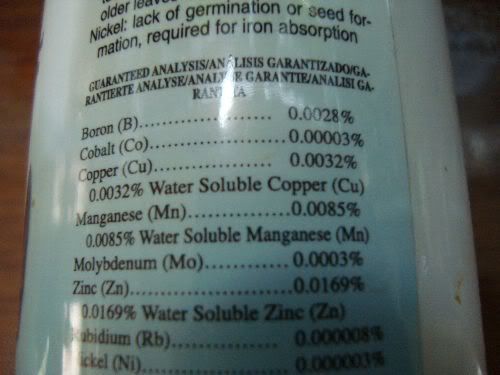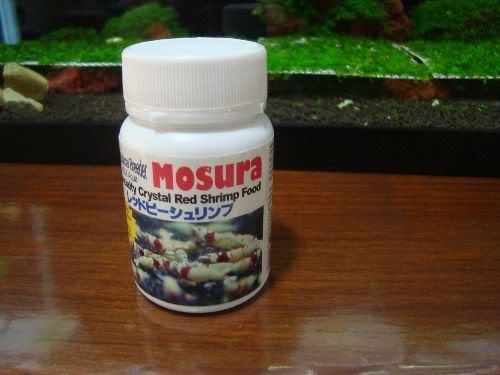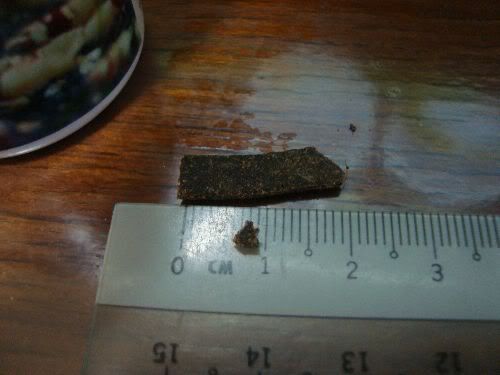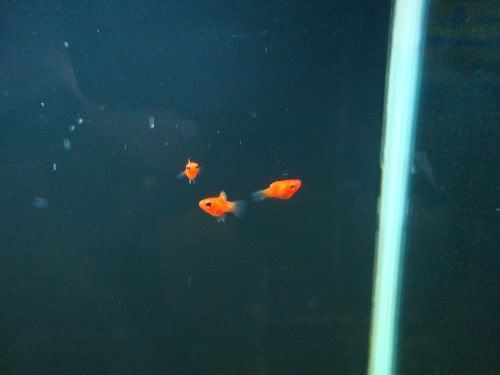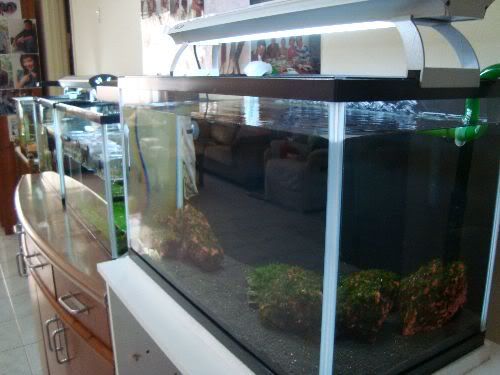Continue to perform the "drip" method until the shrimp container is about another 10% filled with your own tank water. Let the the container float for another 20 minutes for the shrimps to acclimatise to your tank conditions.
It is alright if you wish to pour the container of water into your own tank as our tank water/ conditions are well maintained and clean but we do not recommend that you do so. Just use a small net to fish them out and gently release them into your tank.
Crystal red shrimps (CRS) or black diamond shrimps (BDS), for that matter, are not as difficult a shrimp to raise and breed as previously thought by many. They are actually a very easy shrimp to keep! So long as you provide the right conditions and have a well maintained tank, your shrimps will thrive!
Shrimps prefer to be kept in soft acidic water or close to neutral water conditions (i.e a pH of 6.5 - 7), general hardness, gH, of about 5 and kH of about 1 or 2 will be fine. There should be NO ammonia, nitrate or copper readings in the tank as these are detrimental to your shrimp.
Crystal red shrimps can survive in temperatures from 22 degrees to 28 degrees. However, for better colouration and health of the shrimps, try to keep the temperature of your water below 26 degrees. At Shrimps Online, we set the temperature of our tanks to 25 degrees. We find that shrimps breed constantly at this temperature. Besides, with Singapore's humid conditions, any temperature set below 24 degrees will cause condensation on your tank and you won't be able to see your shrimps plus a pool of water will form below the tank which can be quite dangerous if electrical cables/ appliances are present.
As long as you follow the above conditions as closely as possible, your shrimps should do just fine!
Try to keep away from adding any fertilisers into the tank be it ground fertiliser or liquid fertilisers. Shrimps are, as stressed before, very sensitive and are vulnerable to slight changes. Shrimps are extremely vulnerable to copper and most fertilisers will have copper additives for plant growth. This is a reason why we do not plant high requirement plants into our shrimp tanks. So we can do away with adding any forms of fertilisers into the tank. Instead go for low maintenance plants such as moss (any moss), fissiden (any type), pellia, mini pellia. These plants can grow under low light, low maintenance and with no fertilisers required. We use these plants in our shrimp tanks.
Also, keep away from adding any other solutions into the water. (e.g of solutions such as water clarity, algae away and other soultions that may contain harmful chemicals)
Try to keep away from planting rooted plants into a shrimp tank. this is because if you wish to rescape your tank or need to remove plants, uprooting the plants will cause dirt, debris and other harmful gases to be released into your water column. This can be fatal for your shrimps.
Note that plants are like ice bergs where what you see as the tip of the ice berg is actually only just 10% of the entire ice berg, likewise for plants and their roots! If you do however have a planted tank, try not to uproot plants totally but pull out the plant slightly, just enough to expose some roots and cut the roots, leaving the roots in your substrate or soil. This way, you don't send dirt flying out from beneath. Other wise follow this simple rule for a shrimp tank, "if you stick it in, keep it in!".
Shrimps are natural scavengers. This does not mean they are starving and begging you to feed them. One of the most common mistakes shrimp hobbyists commit is that of over feeding their shrimps! Many undesirable effects can occur through over feeding such as degrading of your water quality, left over food also attracts unwanted pests such as planaria and other micro insects. They are very hard to get rid of later and unsightly in your tank so instead of having to find a cure for it, prevent it! Don't feed your shrimps unnecessarily. We only feed our shrimps once a day and with very small portions.
Just break the mosura specialty food into small bits to feed them. Depending on how many shrimps you have, do a rough gauge and feed accordingly. Feeding less is better than feeding more! Try to avoid adding any other foods or food products that are uncertain to you and that may foul the water.
As long as you have sufficient amounts of moss in your tank, your shrimps will not go hungry. In fact, Shrimps can go unfed for 2 - 3 days!
Note that a small piece of food will expand in the water after awhile. This is another reason for giving a smaller piece.
Crystal red shrimps have a lifespan of about 2 years and can reach an average size of about 2cm. Shrimps will take about 1.5 - 2 months to grow from shrimplet size to mid-adult and about 5 months before they reach the size for reproduction. Healthy shrimps will moult regularly and moulting is a sign of shrimp growth. You do not have to remove the shell as the shrimps will consume the shell which is a good source of calcium for them.
Shrimps that have just moulted are extremely vulnerable as their fresh shells will still not have hardened and will find places to go into hiding. Therefore, it is good to provide some rocks, driftwoods or moss for them to seek refuge.
It is good to maintain a good and clean shrimp tank. Therefore, you should perform water changes and regular basic tank maintenance. We perform water changes, about 30%, on a month basis, in line with the breeding cycle that we have (read "shrimp breeding tips" page for more details of the water changing regime). Of course you may wish to perform minor 10% water changes or top ups if need be. But if your tank is runnig without problems, it is best to leave it as it is!
If you want to successfully breed the shrimps, have an all shrimp only tank. This means not adding any fishes into the tank even if they are deemed to be small and harmless fishes. They will somehow still scare your shrimps by picking on them out of curiosity and may eat the tiny shrimplets. We don't even add in otos (sucker fish) which are said to be shrimp safe as they tend to swim around quickly which may bump into or scare the shrimps.
Instead get a couple of nirite horned snails (they work twice as hard as otos!).
With these simple guidelines and your experience, you would be breeding these amazing shrimps in no time!
Here is a picture of our dedicated shrimp breeding tanks.
If you have further questions or queries, please direct them to shrimpsonline@gmail.com and the team will be glad to help you out.
